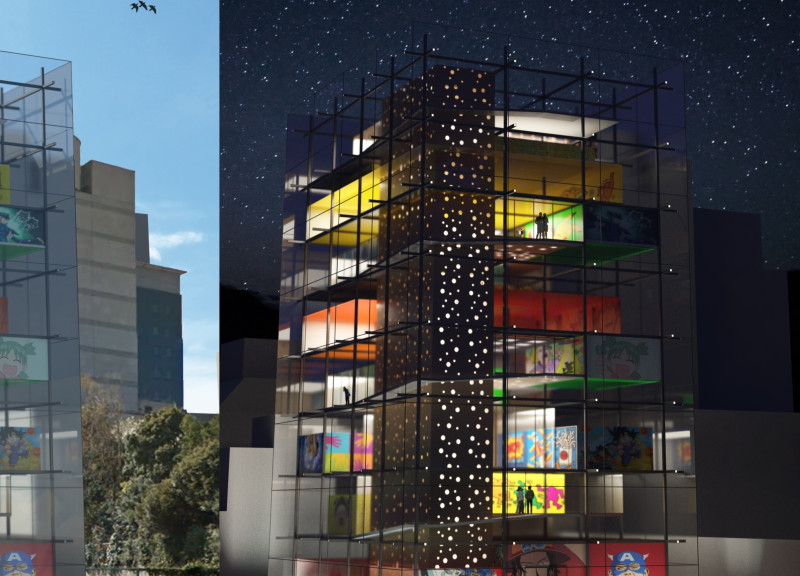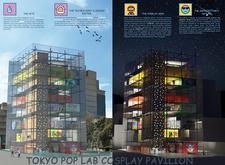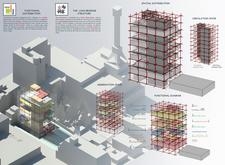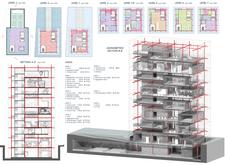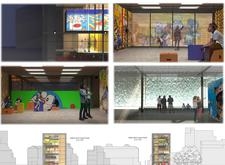5 key facts about this project
### Overview
The Tokyo Pop Lab Cosplay Pavilion is situated in Tokyo, Japan, and serves as a multifunctional space dedicated to the cosplay community and related pop culture. Designed with the intent to engage both local residents and international visitors, the pavilion reflects contemporary Japanese architectural principles while expressing unique cultural narratives. It functions as a hub for creative and artistic expression, showcasing the significance of anime and cosplay through its architectural framework.
### Spatial Configuration
The pavilion’s structural design is organized around a modular grid, promoting flexibility in spatial use and enhancing the functionality of various spaces. It encompasses designated areas including exhibition halls, lecture rooms, workshops, and technical support facilities, allowing for seamless movement and interaction among users. The open layout, featuring staggered blocks, provides visual connectivity across different levels and encourages communal engagement. Each interior space is thoughtfully designed to facilitate interactions, with community areas featuring comfortable seating and exhibition walls that display cosplay art and photography.
### Materiality and Environmental Considerations
The architectural design employs a diverse palette of materials that harmonize modern aesthetics with traditional Japanese influences. The double-skin facade, utilizing glass and steel, enhances energy efficiency and allows for natural light to permeate the interior. Complementary elements of wood within the space add warmth and a sense of comfort. An innovative feature of the pavilion is its "overlay skins," where an outer layer functions as a dynamic facade, adorned with patterns inspired by Japanese manga and anime culture. This not only enhances visual interest but also contributes to thermal insulation and environmental sustainability. Additionally, integrated water features add aesthetic value and support the site’s ecological balance, promoting natural habitat preservation.


